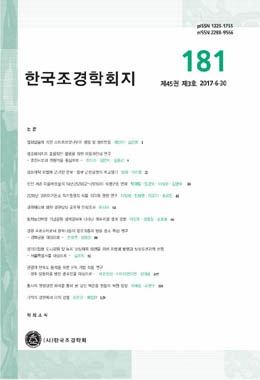기념성을 구현하기 위한 형태와 기법들이 다양하게 나타나는 가운데 지난 2014년 동학농민혁명 기념공원 설계 공모가 진행되었다. 이는 집단의 기억을 강요하던 기념(記念) 사업에 대한 재고의 과정이며, 현재 우리나라에서 계획하고 있는 메모리얼 설계에 대한 동시대 설계가들의 인식을 고찰할 수 있는 의미 있는 소재이다.
본 연구는 동일한 대상지에서 이뤄졌던 동학기념사업들에 대해 시계열적으로 그 형성 배경을 살펴보고, 기존의 문헌 연구 등을 통해 설계공모를 분석하는 과정을 거쳤다. 이를 통해, 과거 정치적 목적의 수단으로써 조성되던 기념물이 공개공모를 통해 다양한 의견 수렴과 형태를 모색하는 방향으로 변하였음을 알 수 있었다. 다층적 분석을 통해 마련된 분석의 틀은 일상성, 상호작용 및 자발성, 추상성, 임시성, 장소성, 통합성 그리고 조화성이다. 이를 통해 본 결과는 다음과 같다.
첫째, 일상 속에서 기념성을 전달하기 위해 기존의 특수성을 갖는 산재한 기념공간들을 일상적 활동 프로그램과 연계하였다. 둘째, 기념물과의 상호작용을 위하여 직접적인 참여와 감성적인 체험 방법을 사용하였다. 셋째, 추상적 재현을 위해 색상, 수직요소, 군집화, 공원의 틀 조작 등의 기법을 사용하였다. 넷째, 임시성과 변화성을 추구하기 위하여 식물을 이용한 애도의 방식과 물리적 변화가 가능한 건축물과 구조물들을 도입하였다. 다섯째, 대상지를 장소성이 있는 공간으로 만들기 위하여 과거 지형을 복원하고, 현장의 모습을 재현하였다. 여섯째, 기존 기념물들과의 연계성을 증진시키기 위하여 순환동선과 축선 조작 기법을 사용하였다. 일곱째, 주변과의 조화를 위하여 지형에 순응하는 동선과 건물을 배치하였다.
In 2014, a Donghak Peasant Revolution Memorial Park design competition was held with various forms and techniques to convey mourning. This is a process of the reconsideration of memorial projects that are used to stimulate the collective memory and it is a meaningful resource for examining the consciousness of contemporary designers in regards to the memorial designs that are currently under planning in Korea.
This study investigated the background of the Donghak commemorative projects that took place at the same site in a timely manner and analyzed the design competition through the existing literature research. Through this, it was seen that the memorial, which was formed by means of past political purposes, has changed into a way to collect various opinions and forms through open design competition. A framework of analysis prepared through multi-layer analysis is daily use, interaction and spontaneity, abstraction, temporality, locality, integration and harmony with surroundings. The results of this study are as follows.
First, in order to convey memorial commemoration in everyday life, the projects organized scattered memorial spaces with special characteristics and linked them with daily activities program. Second, the projects used direct participation and emotional experiences to interact with monuments. Third, color, vertical elements, clustering, and park frame manipulation were used for abstract reproduction. Fourth, the projects introduce architecture and furniture that can be changed and plants for temporal change. Fifth, the previous terrain was restored and the setting of the scene was reproduced in order to make the site a space with place. Sixth, to improve the connection with existing monuments, the projects used techniques such as relaxation and the reinforcement of circulation lines and axes. Seventh, a path and a building conforming to the terrain were arranged for harmony with the surroundings.




